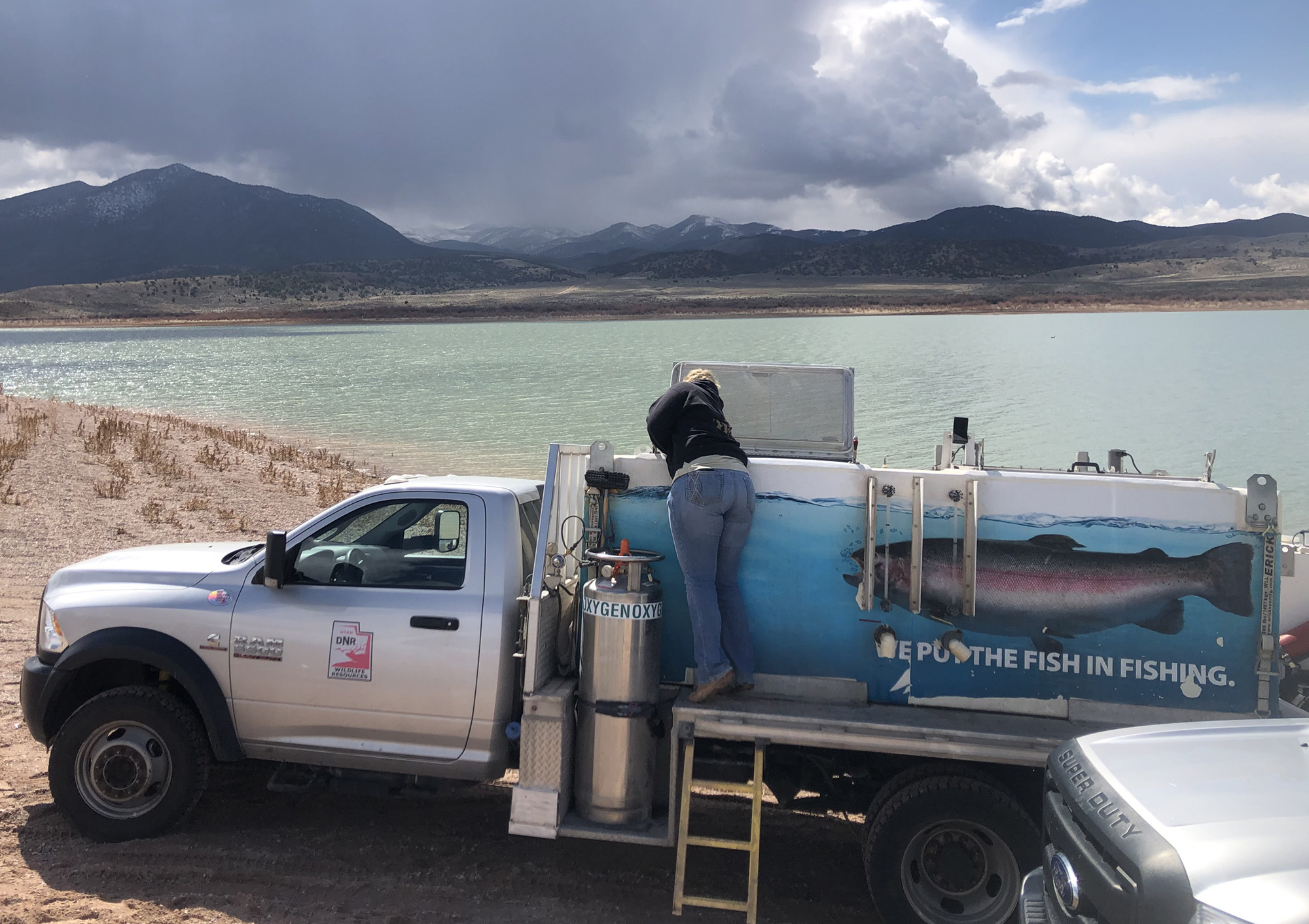
DWR Stocks More Than 10 Million Fish Throughout Utah In 2023
In an effort to enhance fishing and boost native fish populations, the Utah Division of Wildlife Resources stocks a variety of fish species throughout Utah every year, and in 2023, over 10 million fish were stocked into waterbodies across the state.
A whopping 10,634,431 fish — totaling a combined 1,171,098 pounds — were stocked into 604 Utah waterbodies this year. That was a moderate increase over the 8.2 million fish that the DWR stocked last year. Here’s a look at the fish stocking totals from other years:
- 2021: 9.6 million fish were stocked
- 2020: 8.2 million fish were stocked
- 2019: 10 million fish were stocked
Over the past few years, the DWR has made several changes to stocking fish in Utah, including stocking fewer but larger fish where needed to increase their survival rate and also stocking more small fish in locations with higher growth rates. The DWR has also made proactive changes to address drought concerns. A few of those changes include:
- Stocking fewer fish in waterbodies with low water levels or that are projected to have low water levels during drought conditions
- Evaluating the fish species stocked at drought-impacted waterbodies, including stocking more warm-water fish species at certain waterbodies
- Changing the timing of when certain fish species are stocked to help minimize the potential impacts of warmer water
The practice of stocking fish in the Beehive State goes back more than 150 years, as fish were first formally stocked in Utah in 1871. At that time, fish were transported from other states by train and were stocked into lakes along the train route. In 1897, Utah opened its first hatcheries and started raising trout locally.
“These original hatcheries were really impounded streams where we put fry that we got from the federal government,” DWR Aquatic Section Assistant Chief Craig Schaugaard said. “We opened our first traditional fish hatchery — where we produced our own eggs and used raceways like we have today — in Murray in 1899.”
Over time, the DWR expanded its fish hatchery operations. There are now 13 facilities across Utah, with the Mantua Fish Hatchery recently undergoing upgrades and plans underway to build a new Loa Fish Hatchery. The bulk of the fish stocked in 2023 — 1,063,571 pounds of the total 1,171,098 pounds — came from these DWR hatcheries. The remaining fish were transported from disease-free certified hatcheries across the U.S.
“Our hatcheries are important because they provide the majority of the fish we stock in the state,” Schaugaard said. “Stocking is a crucial management tool that we use to provide Utahns with the numbers and species of fish they desire. Stocking fish helps ensure that the public has a great fishing experience. It also helps in the recovery of threatened or endangered fish. June suckers were downlisted from endangered to threatened under the Endangered Species Act in 2021 because of recovery efforts, which included stocking.”
The DWR stocked several different fish species in 2023, including:
- Arctic Grayling
- Crappie (black and white)
- Bluegill
- Bonytail Chub (listed as endangered under the Endangered Species Act)
- Brook Trout
- Brown Trout
- Channel Catfish
- Cutthroat Trout
- Grass Carp
- Green Sucker (recently identified as a distinct native species separate from bluehead sucker)
- June Sucker (listed as threatened under the Endangered Species Act)
- Kokanee Salmon
- Lake Trout
- Largemouth Bass
- Rainbow Trout
- Splake
- Tiger Muskie
- Tiger Trout
- Walleye
- Wiper
The DWR fish hatcheries produce multiple strains of some species, and some of the fish are sterile (meaning they can’t reproduce). Producing sterile fish is an important management tool that helps control fish populations in various water bodies.
Find more details about the DWR’s stocking strategies on the DWR website.




